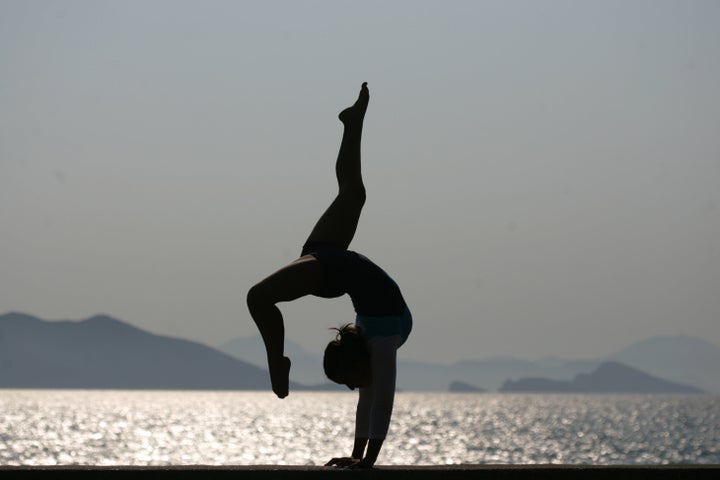
Want to know the trick behind toning ANY body part -- even the most troublesome "stubborn fat" areas like your hips, thighs and stomach? The trick is... on you, for believing there is a trick!
Anywhere you turn, you will see "toning" products: toning sneakers, toning belts, etc. What does toning even mean? Have you ever taken a second to think about that? The marketers who use this term will have you believe that increasing the tone of a muscle is a good thing, yielding the aesthetic results you so deeply want: Tight abs! Tight arms! A tight butt! A tight stomach! Yes, tight is the word, because that's exactly what "muscle tone" truly refers to: the resting tension, or tightness, of a muscle. (For the fitness professionals out there, I am aware that this is a bit of a simplification for the purposes of this article.) So far, you're probably nodding along saying, "Exactly -- that's what I want, tight muscles!"
Unfortunately an increase in muscle tone, which these products are highly unlikely to yield in the first place, will have no impact on aesthetics, and will actually have a negative effect on flexibility, mobility and posture. Short, tight muscles do nothing to get you beach-ready, and in fact predispose you to injury. An example of an overly toned muscle is the tight chest that many of us get from working at computers endlessly each day; these tight chest muscles yield a Mr. Burns-like rounded shoulder posture -- not exactly something that is desireable!
When marketers use the term tone however, they really mean they promise you to give a certain muscle noticeable shape and lose fat in that area. "Sculpt" is another term used synonymously in this respect as well. Let me clear up any lingering misunderstanding or confusion about this statement. This toning/sculpting promise would infer that the myth of nonsurgical spot reduction is true. (Surgical spot reduction, aka liposuction, of course does in fact work to reduce fat in a specific area.) The notion that you can target an area for fat loss through a certain exercise is completely false. There isn't so much as a shred of positive evidence or research supporting this concept. That being said, it is entirely possible to "spot" muscle build; that is, you can perform a strength exercise to target a specific muscle and the muscle will in fact get bigger and more shapely.
So let's say we properly train the muscles in question, for instance the legs and buttocks -- which no set of toning shoes will ever do for you, by the way -- results may still be evasive. And the best way for me to explain why is with the following analogy: What is more visible -- a ping pong ball underneath a thin flat sheet or a softball underneath a big fluffy comforter?
Of course it's easier to see the ping pong ball, because while it is significantly smaller than the softball, it is being hidden only by a thin layer, vs. the softball's thick covering. The same is true of our bodies. Regardless of how hard and efficiently you work a muscle, if enough fat is covering it, you will not see the muscle. And, as clarified above, no amount of direct work to the muscle will rid the area of fat.
Which leads me to what most people want when they use the word "tone": less fat and more muscle. You must lose fat in order to see any underlying body structure; and once you lose fat, you must have sufficient muscle in the body part you want highlighted for it to be visible.
Fat loss, for most, is a relatively simple matter that is dependent on both the quality of foods consumed and an accompanying reduction in volume of consumption (though the former usually inherently takes care of the latter). To build muscle, well that's super-easy: Work the muscle for at least one to two sets of any given given exercise with a relatively low repetition range, usually fewer than 20 reps, until fatigue (i.e., you cannot complete another repetition).
But that's too simple, right!? There's good news and bad news: The good news is, yes, that's really all it takes to get "toned." The bad news is that you, like many, have a closet full of worthless gimmicky gadgets that are now ready for the trash!
For more by Jeff Halevy, click here.
For more on fitness and exercise, click here.